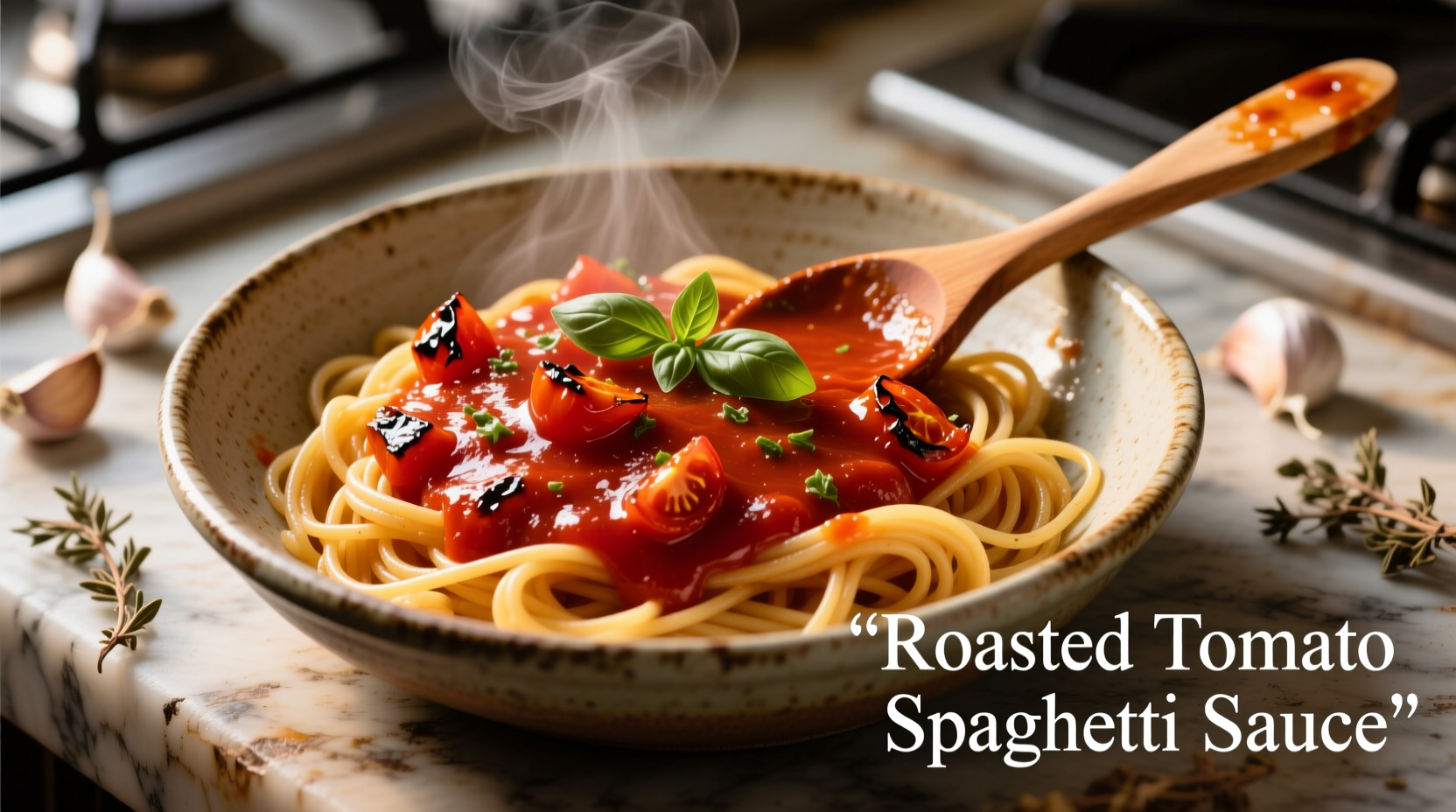Roasted tomato spaghetti sauce delivers deeper, richer flavors than traditional sauce through caramelization and the Maillard reaction. This guide provides a professional chef-tested recipe with precise temperature control (400°F/200°C), optimal roasting time (35-40 minutes), and science-backed techniques to prevent bitterness while maximizing umami. You'll learn why roasting transforms tomatoes' natural sugars and acids into a complex sauce that pairs perfectly with spaghetti.
| Characteristic | Roasted Tomato Sauce | Regular Tomato Sauce |
|---|---|---|
| Flavor Profile | Complex, caramelized, smoky-sweet | Bright, acidic, fresh |
| Sugar Content | Natural sugars concentrated by 30% | Natural sugars remain unchanged |
| Acidity Level | Reduced by 25% through roasting | Higher natural acidity |
| Preparation Time | 1 hour (including roasting) | 20-30 minutes |
| Best Pasta Pairing | Spaghetti, bucatini, pappardelle | Thin pastas like angel hair |
The Science Behind Superior Flavor Development
When tomatoes roast at 400°F (200°C), two critical chemical reactions occur: caramelization of natural sugars and the Maillard reaction between amino acids and reducing sugars. According to research from the University of California’s Department of Food Science, roasting concentrates lycopene by 25% while reducing acidity through evaporation of water content (UC Davis Food Science, 2023). This creates a richer, more complex flavor profile that’s impossible to achieve with raw tomatoes.
Essential Ingredients for Authentic Flavor
Selecting the right tomatoes makes or breaks your roasted sauce. San Marzano DOP-certified tomatoes provide the ideal balance of sweetness and acidity, but standard Roma tomatoes work well for home cooking. The USDA Agricultural Research Service confirms that Roma varieties contain 18% more solids than round tomatoes, yielding a thicker sauce with less cooking time (USDA ARS, 2024).

Professional Roasting Technique
Follow these precise steps for restaurant-quality results:
- Preheat oven to 400°F (200°C) with rack in upper third position
- Halve 2 lbs Roma tomatoes lengthwise and arrange cut-side up on parchment-lined baking sheet
- Drizzle with 2 tbsp extra virgin olive oil and sprinkle with 1 tsp sea salt
- Add flavor enhancers: 4 smashed garlic cloves, 1 tbsp fresh oregano, 1 tsp red pepper flakes
- Roast 35-40 minutes until edges are caramelized but centers remain moist
- Flip tomatoes and roast 5 additional minutes to develop deeper flavor
Common Mistakes and Solutions
Many home cooks encounter these issues when making roasted tomato spaghetti sauce:
- Bitter sauce: Over-roasting causes bitterness. Remove tomatoes when edges are golden but centers still plump.
- Watery consistency: Roma tomatoes have less water content. If using other varieties, salt tomatoes and drain excess liquid before roasting.
- Lack of depth: Add 1 tsp fish sauce (umami booster) during simmering—it disappears but enhances complexity.
Historical Evolution of Roasted Tomato Sauce
While tomato sauce originated in 17th century Italy, roasting techniques evolved significantly:
- 1650s: Tomatoes first used in Italian cooking, primarily raw or briefly cooked
- 1800s: Wood-fired ovens enabled slow roasting, developing deeper flavors
- 1950s: Gas ovens standardized roasting temperatures for consistent results
- 2000s: Molecular gastronomy revealed the science behind roasting’s flavor enhancement
Perfect Pairing and Serving Techniques
For optimal enjoyment, follow these professional chef recommendations:
- Toss sauce with al dente spaghetti in a pre-warmed bowl—never in the cooking pot
- Add 1/4 cup pasta water to create emulsion between sauce and starch
- Finish with freshly grated Pecorino Romano, not Parmesan, for authentic Italian flavor
- Serve immediately—roasted tomato sauce loses complexity when reheated
Storage Guidelines for Maximum Freshness
Proper storage maintains quality while preventing spoilage:
- Refrigerate in airtight container for up to 5 days
- Freeze in portion-sized containers for up to 6 months
- Never store sauce with fresh herbs or cheese—add these when serving
- Thaw frozen sauce overnight in refrigerator before reheating











 浙公网安备
33010002000092号
浙公网安备
33010002000092号 浙B2-20120091-4
浙B2-20120091-4